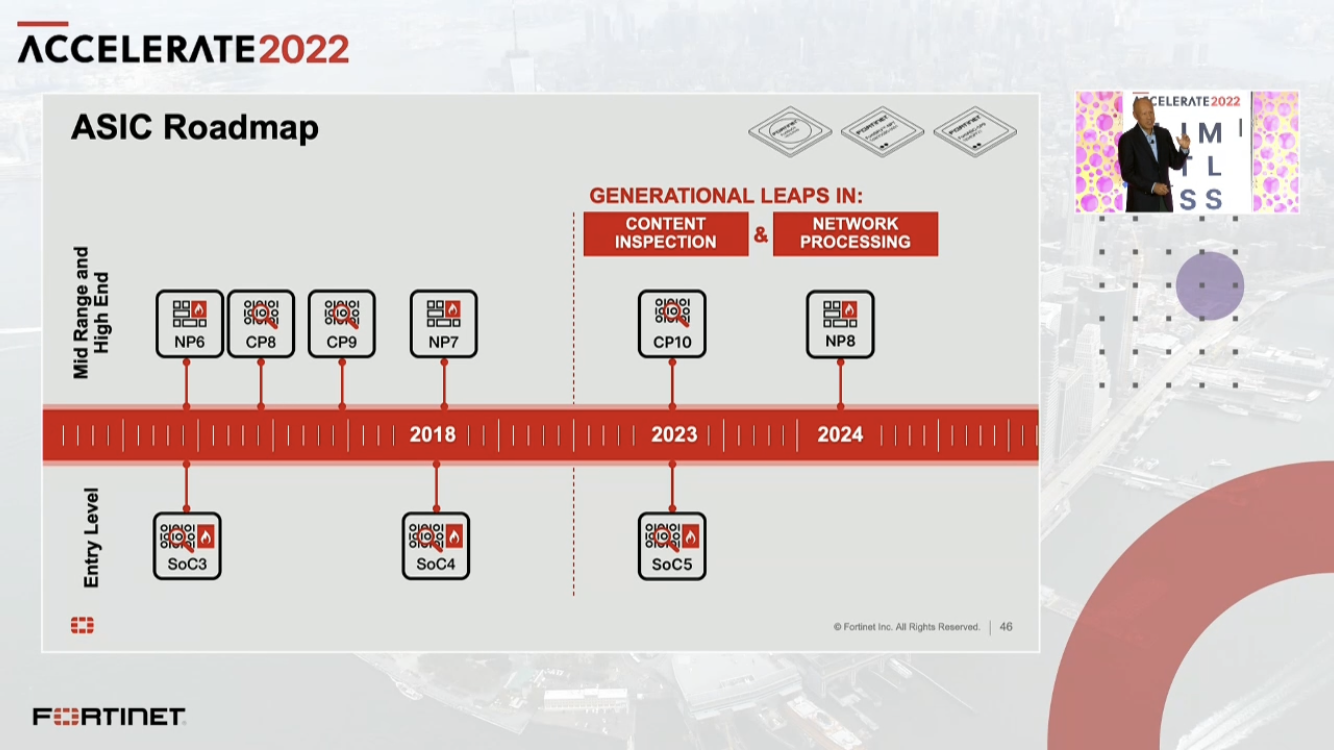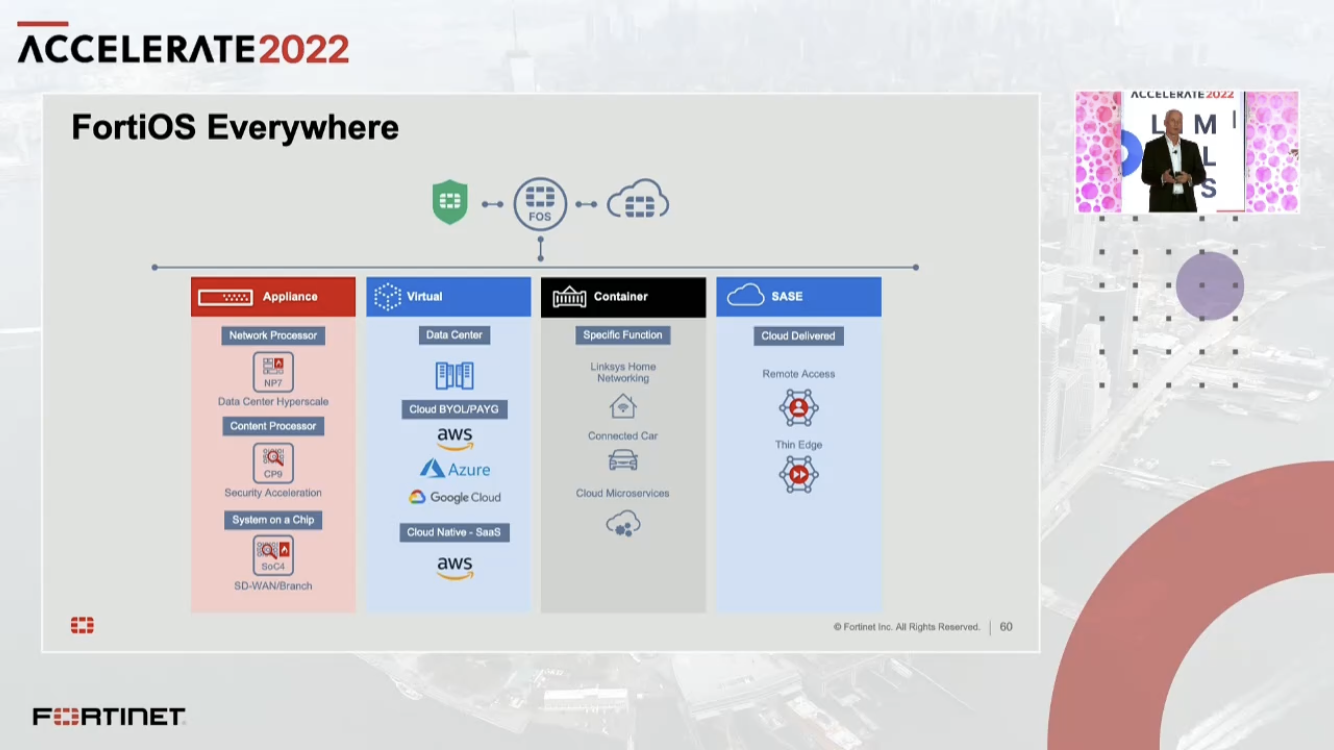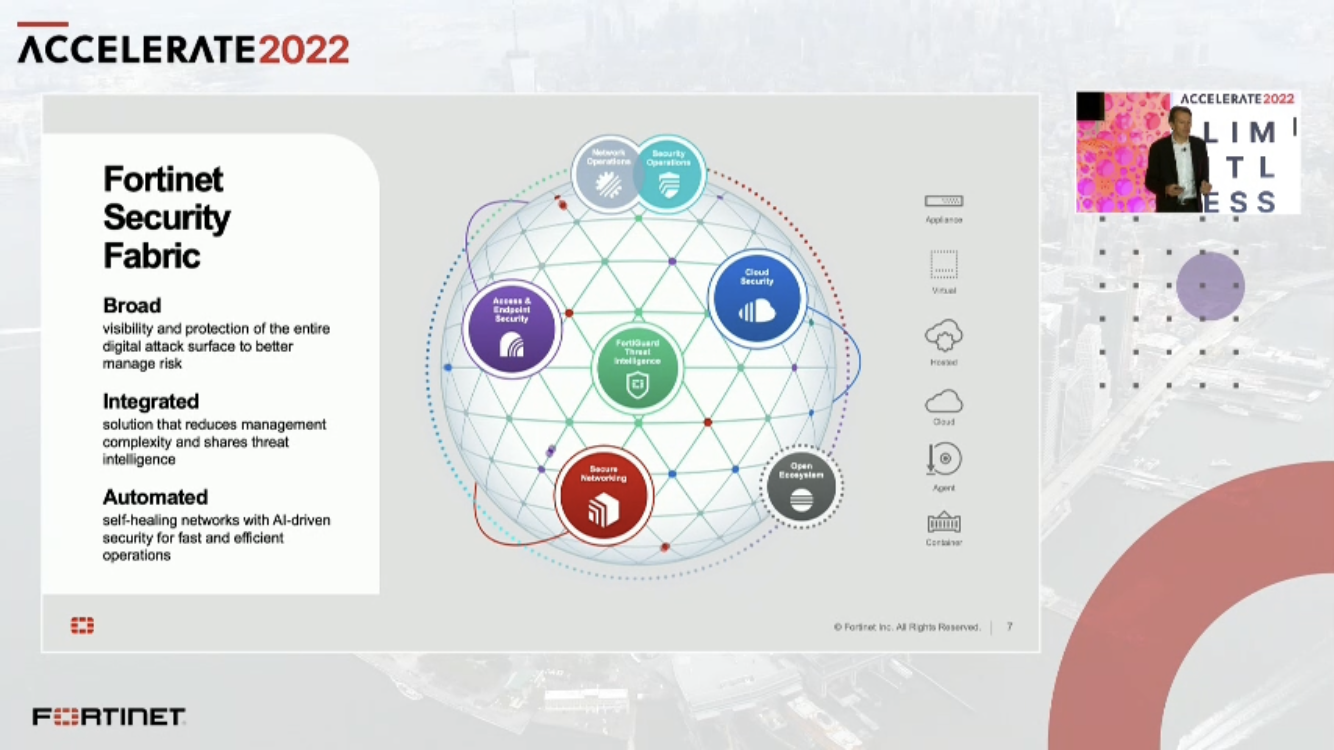Fortinet had its Accelerate 2022 conference today. Its executive team presented its current strategy and expectations for the future and highlighted what it thinks are its key differentiators in the marketplace. The company explained: (a) the importance of its ASIC and its software code-base called FortiOS, (b) its services bundling strategy called “Fabric,” and (c) its sales and marketing differentiation (the presentation was intended mainly for its selling partners as well as for financial analysts). We were reminded of the relative simplicity of Fortinet’s messaging (Fabric, ASICs) and the solid financial results that illustrated its sales team and partners’ success (it grew product revenue 54% Y/Y in the most recent quarter).
ASICs and FortiOS. The company explained that it takes around four years to develop an ASIC. According to its ASIC roadmap, it has three types of ASICs: Network Processing, Content Inspection, and Entry-level Systems-on-Chip. CEO Ken Xie explained that the company uses 7nm process geometry semiconductors for its ASICs, which we assume means for its CP10 (content inspection) based on the timeframe shown in its ASIC Roadmap. The company’s marketing strategy around its ASICs is that these systems allow its firewall platforms to perform better than competitors.
The company’s operating system software that runs on its firewall platforms has evolved to include many functions besides standard firewalling, including SD-WAN, Enterprise WLAN Controller, and SASE. What’s interesting is that Fortinet is up till now has been taking an appliance-focused strategy and integrating many non-firewall services into its FortiOS. However, the company indicated that the OS will find itself in many environments in the future. Indeed, management highlighted that it sells FortiOS to four different environments today, including on appliances, as virtual software (that can operate in a data center, on a cloud hyperscaler infrastructure, or as cloud-native SaaS), as a container, or as cloud-delivered services. The company said that VM revenues are growing very fast, but expects its VM revenue stream to “go cloud-native.” The company says it is “working on” a SaaS business and that its customers will consume these SaaS services through Fortinet’s own cloud service. To summarize, management said that its R&D team is heavily investing in cloud designs and expects to make new cloud-related announcements soon.
Fabric. The company highlighted its sales strategy called “Fabric.” CEO Ken Xie said that Fortinet charges less for its services, only around 20% of product prices and that when it uses bundling (which we interpret as synonymous with its “Fabric” strategy), it “discounts a lot.” The company shared a slide highlighting “Broad Service with Half the Cost.” The slide highlighted its FortiCare, FortiGuard, and FortiTrust services on this slide. On the company’s earnings call earlier in May, it said it is “giving away” services in some cases. The company’s Fabric offering includes services/functions/software such as “Access & Endpoint Security,” FortiGuard Threat Intelligence,” “Secure Networking,” “Cloud Security,” and “Network and Security Operations.” If we were a competitor to Fortinet, we would find it frustrating to compete with Fortinet’s discounting of these services – yet customers seem to embrace Fortinet’s integrated product offerings.
Sales and Marketing. The company rapidly embraced SD-WAN a few years back, and now many of its firewall customers are using the same appliances to run SD-WAN networks. Likewise, Fortinet has embraced the SASE marketing moniker and has found large selling partners for this offering. Likewise, the company has adopted a selling strategy called “OT” that takes advantage of its ruggedized products (first introduced in 4Q20); it has experienced substantial growth in new vertical markets such as manufacturing and construction. The company’s management has likewise embraced the industry trend of converging networking and security functions. It expects to sell using its positioning as a leader in “Secure Networking.” Fortinet has experienced strong growth LTM product growth of 44% growth, which supports Fortinet’s decisions to embrace SD-WAN, SASE, OT, and Secure Networking.


